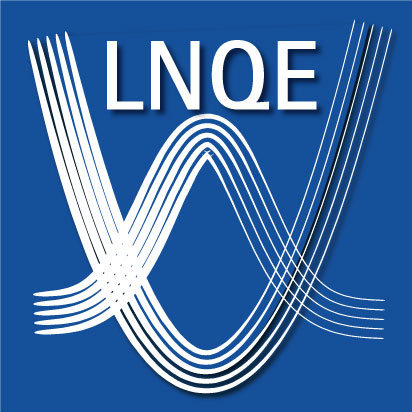Graphene for Energy Storage and Conversion
| Leitung: | R. Haug, P. Behrens |
| Team: | J. Rode |
| Jahr: | 2013 |
Only for a decade now, we know that it is possible to investigate a single layer of graphite which is called graphene. Nevertheless, it is already clear that graphene is one of the most fascinating materials ever found. Due to its unique mechanical and electronic properties it is suggested to be extremely interesting in applications concerning storage or conversion of energy.
The focus of this project lies on double-layered graphene systems of a certain rotational mismatch also called Twisted Bilayer Graphene (TBG). TBG samples are folded out of single layers by nanomachining with an Atomic Force Microscope (AFM); AFM-measured morphology in as-prepared structures is found to hold a surprising riches of information about interlayer interaction[1].
Selected TBG samples are electrically probed in magnetotransport measurements. Qualitatively different signatures like a transition in Berry phase[2] and satellite features in Landau quantization[3] are found in accordance with theory and point towards a sensitive connection between TBG morphology and electronic dispersion.
Schematic of a graphene sheet (orange); a selected area is folded out via Atomic Force Microscope, thereby creating Twisted Bilayer Graphene.
[1] J. C. Rode; C. Belke; H. Schmidt; R. J. Haug, Interlayer Configurations in Twisted Bilayers of Folded Graphene, arXiv:1608.08133 [cond-mat.mtrl-sci] (2016).
[2] J. C. Rode; D. Smirnov; H. Schmidt; R. J. Haug, Berry phase transition in twisted bilayer graphene, 2D Materials 3, 035005 (2016).
[3] H. Schmidt; J. C. Rode; D. Smirnov; R. J. Haug, Superlattice structures in twisted bilayers of folded graphene, Nature Communications 5, 5742 (2014).








